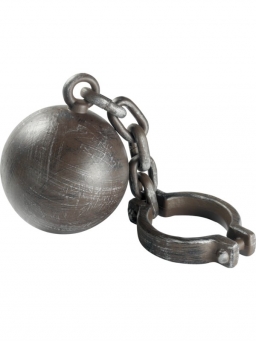The prison ball
Calculate the density of the material from which the prison ball is made if you know its diameter is 15cm and its weight is approximately 2.3kg. With the help of mathematical-physicochemical tables, estimate what material the ball is made from.
Final Answer:

Tips for related online calculators
Do you know the volume and unit volume, and want to convert volume units?
Tip: Our Density units converter will help you convert density units.
Do you want to convert mass units?
Tip: Our Density units converter will help you convert density units.
Do you want to convert mass units?
You need to know the following knowledge to solve this word math problem:
algebrasolid geometryUnits of physical quantitiesGrade of the word problem
We encourage you to watch this tutorial video on this math problem: video1
Related math problems and questions:
- Weight
 The kilogram weight has a volume of 116 ml. From which material is it probably made? Use substance density tables, e. G. mathematical-physical-chemical tables.
The kilogram weight has a volume of 116 ml. From which material is it probably made? Use substance density tables, e. G. mathematical-physical-chemical tables. - The pipe
 The pipe is 1.5 m long. Its outer diameter is 60 cm, inner diameter is 52 cm. Calculate the pipe's weight if the material's density from which it is made is 2 g/cm³. Please round the results to whole kilograms.
The pipe is 1.5 m long. Its outer diameter is 60 cm, inner diameter is 52 cm. Calculate the pipe's weight if the material's density from which it is made is 2 g/cm³. Please round the results to whole kilograms. - Approximately 6361
 The glass paperweight has the face of a sphere with a radius of 4 cm. Estimate and then calculate its weight. The density of glass is approximately 3800 kg/m³.
The glass paperweight has the face of a sphere with a radius of 4 cm. Estimate and then calculate its weight. The density of glass is approximately 3800 kg/m³. - Lead ball
 What is the weight of a lead ball with a diameter of 3 cm if the density of lead is 11340 kg/m cubic?
What is the weight of a lead ball with a diameter of 3 cm if the density of lead is 11340 kg/m cubic? - Iron cube
 Calculate the weight of a cube with an edge length of 15 cm made of iron, (its density is ρ = 7250 kg/m3)
Calculate the weight of a cube with an edge length of 15 cm made of iron, (its density is ρ = 7250 kg/m3) - Calculate sphere
 Calculate a sphere's surface area and weight if its volume is 707.54 cm³ and if it is made of a material with a density of 7.8 g/cm³.
Calculate a sphere's surface area and weight if its volume is 707.54 cm³ and if it is made of a material with a density of 7.8 g/cm³. - Bricks
 Openings in perforated bricks occupy 10%, and brick has dimensions of 30 cm, 15 cm, and 7.5 cm. Calculate a) the weight of a perforated brick if you know that the density of the full brick material is p = 1800 kg/m³ (1.8 kg/dm³) b) the number of perforate
Openings in perforated bricks occupy 10%, and brick has dimensions of 30 cm, 15 cm, and 7.5 cm. Calculate a) the weight of a perforated brick if you know that the density of the full brick material is p = 1800 kg/m³ (1.8 kg/dm³) b) the number of perforate
